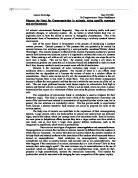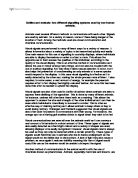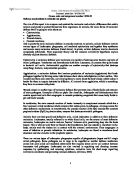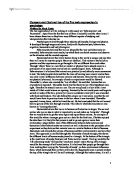The respiratory organs act as an interface for water exchange and in some cases salt exchange as well. In mammals, an obligatory exchange occurs in the lungs – water is lost from the lungs by evaporation. In fish, the direction of water and ion movement ids dependent on the environment (marine or freshwater) though osmoregulation is achieved through the use of chloride cells. In marine teleosts, water is lost across the gills and Na+ and Cl- are gained across the gills as the body fluids are more dilute than the seawater. The chloride cells secrete Cl- against its gradient through the use of Na+/ K+ ATPase and Na+/K+/2Cl- transporter, resulting in no net movement of water. Freshwater teleosts have body fluids that are more concentrated than their environment, so their chloride cells function differently to those in marine teleosts. Instead of secreting Cl-, they actively absorb ions that are lost across the gills, namely Ca2+ and possibly Cl-. Freshwater teleosts also use pavement cells to actively transport Na+ in, using proton pumps and Na+/K+ ATPases. The osmoregulation mechanisms in the respiratory organs in these animals are very different, reflecting the different environments they live in and thus osmoregulatory challenges they face.
Salt glands act as osmoregulatory organs by secreting salts. This is achieved using Na+/ K+ ATPases and Na+/K+/2Cl- transporters to pump NaCl out of the extracellular fluid. The salt glands in marine elasmobranches are located in the rectum, and are therefore known as rectum glands. They secrete NaCl into the lumen of blind-ended tubules, which causes water to flow in as well. The resulting solution is isosmotic with the extracellular fluid but has a much higher NaCl concentration, and is drained into the intestine near the rectum. Elasmobranches use the rectal gland to control the amount of water flowing in due to the NaCl concentration gradient, and thus control the volume of the extracellular fluid. Many marine birds and reptiles also have salt glands, but these are located in shallow depressions in the skull above the eyes (Eckert, 2002). These salt glands consist of secretory tubules that eventually drain into the nostrils, and so are known as nasal salt glands. The secretion mechanism of nasal salt glands is similar to rectum glands, but produces a solution that is hyperosmotic with the extracellular fluid rather than isosmotic. This may be achieved due to a counter-current system of the salt gland and the surrounding capillaries, which allows the concentration gradient of the Na+/ K+ ATPase and Na+/K+/2Cl- transporter has to work against to be as low as possible (Eckert, 2002). The nasal salt glands allow these marine birds and reptiles to drink seawater without a large reduction in extracellular fluid volume.
The kidney is an essential osmoregulatory organ found in most animals, which is responsible for the removal of waste products and the reabsorption of water. It functions on the filtration-reabsorption principle with tubular secretion (Schmidt-Nielson, 1997). High blood pressure forces fluid and small particles from the capillaries into the Bowman’s capsule, resulting in ultrafiltration. The majority of the resulting filtrate is reabsorbed back into the bloodstream in the proximal tubule, Loop of Henle and distal convoluted tubule and connecting duct. The hormone ADH, which alters the duct’s permeability to water, regulates the amount of water reabsorbed by the cortical collecting duct. Some substances are removed from the bloodstream by tubular secretion.
The normal concentration of urine is determined by the Loop of Henle in mammals and birds. It allows them to produce concentrated urine using counter-current multiplication, which is achieved by pumping NaCl out of the thick ascending limb, which in turn causes water to move out of the thin descending limb. Longer loops of Henle allow more water to be absorbed as more NaCl can be pumped out, producing a greater osmotic pressure. Thus, animals living in hot, dry environments such as camels tend to have long loops of Henle to conserve as much water as possible.
Animals that do not possess loops of Henle cannot produce concentrated urine: they can only produce urine that is isosmotic or hyposmotic to their extracellular fluid. Marine teleost fish produce urine that is osmotic to their extracellular fluid, but is rich in divalent ions such as Ca2+ Mg2+ and SO42- that are found in the seawater they drink. The kidney secretes these ions to keep water loss from the extracellular fluid to a minimum. Freshwater teleosts produce urine that is hyposmotic to their body fluids, unlike their marine counterpart. The kidneys instead reabsorb salts – as the extracellular fluid is more concentrated than the freshwater, ions are lost from the extracellular fluid.
Amphibians usually produce very dilute urine to remove excess water as they usually live near freshwater, which flows in osmotically. Thus their kidneys function similarly to freshwater fish. Reptiles that live in freshwater also produce dilute urine. Marine reptiles however can only produce urine that is isosmotic to their blood plasma, and so excrete excess salts via salt glands.
The form of nitrogenous waste in the urine of different animals is linked to the amount of water those animals need to conserve. Ammonotelic animals such as fish remove waste nitrogen in the form of ammonia. This is possible as the fish are surrounded by plenty of water. Ureotelic animals such as humans remove waste nitrogen in the form of urea, which requires much less water (50ml of water per gram of nitrogen compared to 500ml of water per gram of nitrogen for ammonotelic animals). Uricotelic animals excrete uric acid, which is very insoluble and appears as a white precipitate. Only requiring 1ml of water per gram of nitrogen, uric acid is the waste product of birds and other animals living in dry habitats, such as terrestrial reptiles (Schmidt-Nielsen, 1997).
The osmotic challenges faced by animals are dependent on the conditions of the environment they live in. Different environments pose different osmotic challenges, so the mechanisms animals use to survive in their environments will also vary. By understanding these mechanisms, we can understand how animals have adapted to live in their environments, however harsh they may be.
References
- Eckert, R. et al. 2002. Animal Physiology. Fifth Edition. W.H. Freeman and Company
- Schmidt-Nielson, K. 1997. Animal Physiology – Adaptation and Environment. Fifth Edition. Cambridge University Press
- Withers, P.C. 1992. Comparative Animal Physiology. Saunders College Publishing








